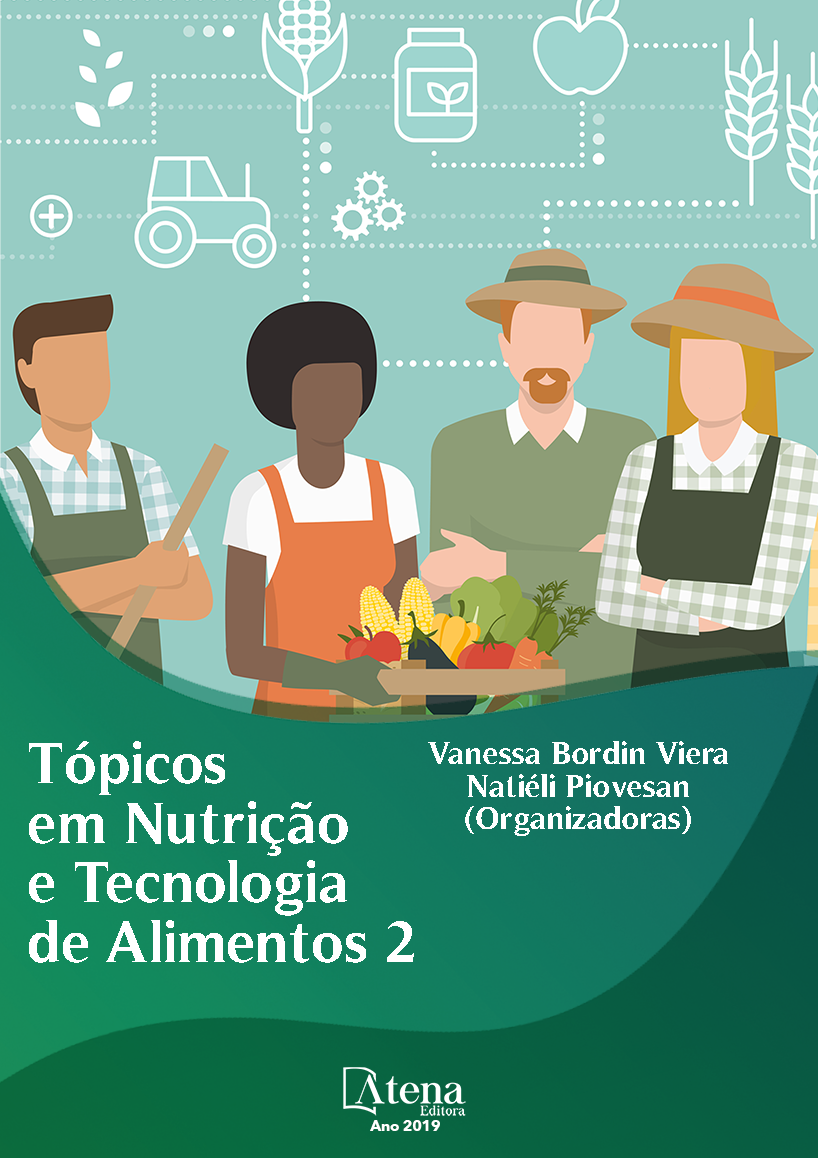
ANÁLISE SENSORIAL DE UVAS RUBI CONTENDO COBERTURA COMESTÍVEL DE GEL E NANOPARTÍCULAS DE QUITOSANA
O objetivo do trabalho foi avaliar
sensorialmente uvas contendo cobertura
comestível formada da associação de gel e
nanopartículas de quitosana. As nanopartículas
foram preparadas pelo método de gelificação
iônica e caracterizadas pelas técnicas de
Medidas de Espalhamento Dinâmico de Luz
e Potencial Zeta. Os frutos, um dia após a
colheita, foram selecionados de acordo com
a sua coloração, higienizados com hipoclorito
de sódio (1%v/v) durante 15min, lavados com
água potável e secos naturalmente durante 2h.
As uvas, exceto o controle, foram imersas no
gel de quitosana (20mg/ml) enriquecido com
nanopartículas nas concentrações de 1,5mg/ml,
3,0mg/ml e 6,0mg/ml, durante 3min, deixados
para secar por 30min em temperatura ambiente.
As uvas armazenadas em refrigeração durante
3 dias após a aplicação das coberturas, foram
submetidas aos testes de aceitação e intenção
de compra realizados por 100 provadores
não treinados selecionados na UFPE. As
nanopartículas apresentaram potencial zeta
de 51,4mV(±5,77) e tamanho médio de
101,7nm(±5,05). No teste de aceitação, as
uvas com e sem coberturas só apresentaram
diferença significativa para os atributos de
aparência e aroma entre as amostras controle
e com 6mg/ml de nanopartículas. No teste
de intenção de compra, não houve diferença
significativa entre as amostras cujas médias
mostraram que os provadores “possivelmente
comprariam” essas uvas. Portanto, as análises
realizadas mostraram uma boa aceitação
das uvas com cobertura comestível de
nanopartículas de quitosana viabilizando seu
uso a nível comercial.
ANÁLISE SENSORIAL DE UVAS RUBI CONTENDO COBERTURA COMESTÍVEL DE GEL E NANOPARTÍCULAS DE QUITOSANA
-
DOI: 10.22533/at.ed.2351909083
-
Palavras-chave: Frutas. Biopolímero. Nanotecnologia.
-
Keywords: Fruits. Biopolymer. Nanotechnology.
-
Abstract:
The aim of the study was to evaluate the sensory aspects of grapes
coated with chitosan gel and nanoparticles. The nanoparticles were prepared by the
ionic gelation method and characterized using the Dynamic Light Scattering technique
and Zeta Potential. The fruits, one day after harvest, were selected according to their
coloration, sanitized with sodium hypochlorite (1% v / v) for 15 minutes, washed
with water and dried naturally for 2 hours. The grapes was stored for 3 days at cold
temperature after the application of the coatings. They were submitted to the acceptance
and purchase intention tests performed by 100 untrained tasters selected at UFPE.
The nanoparticles presented zeta potential of 51.4mV (± 5.77) and average size of
101.7nm (± 5.05). In the acceptance test, the grapes with and without edible coatings
only exhibited significant difference for the appearance and aroma attributes between
the control samples and samples coated with 6mg/ml of nanoparticles. In the purchase
intention test, there was no significant difference between the samples which means
that the tasters “would possibly buy” these grapes. Therefore, the results showed a
good acceptance of grapes coated with chitosan nanoparticles, which make it possible
to use them commercially.
-
Número de páginas: 15
- Natália Ferrão Castelo Branco Melo
- Miguel Angel Pelágio Flores
- André Galembeck
- Fabiana A. Lucchessi
- Tânia Lúcia Montenegro Stamford
- Thatiana Montenegro Stamford-Arnaud
- Thayza Christina Montenegro Stamford


